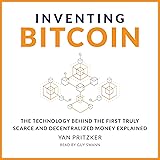The Allure of Bitcoin Solo Mining: Unlocking Potentially Massive Rewards
In the dynamic world of cryptocurrency, the quest for digital gold often leads enthusiasts to Bitcoin mining. As highlighted in the video above, the concept of mining Bitcoin from home, and the prospect of a significant payout—even “$318,000 in Bitcoin FROM HOME!”—captivates many. While traditionally associated with large-scale operations or mining pools, the idea of Bitcoin solo mining offers a tantalizing, albeit high-stakes, alternative that could potentially yield substantial individual rewards.
This method deviates sharply from conventional approaches, promising the miner 100% of the block reward if successful. Imagine if, after a period of dedicated effort and considerable computational power, you were to secure a full block reward, such as the “six and a quarter Bitcoin” mentioned. This approach embodies the true spirit of decentralization, placing the fate of the reward entirely in the hands of the individual miner.
Understanding the Mining Landscape: Pools vs. Solo Bitcoin Mining
The Bitcoin network relies on miners to validate transactions and add new blocks to the blockchain, a process known as Proof-of-Work. In exchange for this vital service, successful miners receive newly minted Bitcoin, known as the block reward, plus transaction fees. Historically, the immense computational power required led to the rise of mining pools, which are collaborative groups where many miners combine their hash rate to increase their collective chances of solving a block.
When a pool successfully mines a block, the rewards are distributed proportionally among all participants based on their contributed hash rate. This method offers a more consistent, albeit smaller, stream of revenue, making it a popular choice for most individual miners. In contrast, Bitcoin solo mining is an endeavor where a single miner or entity dedicates their entire computational resources to solving a block independently, without pooling their hash power with others. This “all-or-nothing” strategy means fewer, but potentially much larger, payouts.
The Mechanics of Solving a Bitcoin Block
To truly grasp the concept of solo mining, it’s essential to understand what “solving a block” entails. Each Bitcoin block contains a set of validated transactions and a reference to the previous block. Miners compete to find a specific numerical value, called a “nonce,” which, when combined with the block data and run through a cryptographic hash function (SHA-256), produces a hash that meets a specific target difficulty. This target is dynamically adjusted by the Bitcoin network roughly every two weeks to maintain a consistent block production time of approximately ten minutes.
The process is essentially a colossal guessing game, where miners with more powerful Application-Specific Integrated Circuit (ASIC) hardware can make more guesses per second, measured in terahashes per second (TH/s) or petahashes per second (PH/s). The miner who first discovers the correct nonce broadcasts their solution to the network, and if validated by other nodes, their block is added to the blockchain. The current block reward for successfully mining a Bitcoin block is 6.25 BTC, not including transaction fees, which fluctuates based on network activity.
The High-Stakes Gamble: Why Embark on Solo Bitcoin Mining?
The primary allure of solo Bitcoin mining is the potential for a full, unshared block reward. As the video speaker notes, if you succeed, “then you get 100% of the block.” This translates to a significantly larger payout than what a typical mining pool participant would receive, whose earnings are diluted among many contributors. For instance, if you were to mine a block today, you would receive the entire 6.25 BTC, which at certain price points, could indeed amount to a life-changing sum.
Beyond the financial incentive, some solo miners are driven by ideological principles. They value the pure decentralization aspect, preferring to contribute directly to the network’s security without intermediaries. Imagine if your personal setup, running independently, became the one to secure the next block; it’s a testament to individual effort in a collective system. This independent spirit resonates with the core philosophy of Bitcoin, attracting those who are willing to embrace significant risk for potentially immense reward and autonomy.
The Realities and Risks of Solo Bitcoin Mining
While the dream of mining “$318,000 in Bitcoin” is powerful, the reality of solo Bitcoin mining is fraught with challenges and requires substantial investment. The sheer computational power needed to compete effectively with the global network’s aggregate hash rate is staggering. Individuals or small operations would need to invest hundreds of thousands, if not millions, of dollars in state-of-the-art ASIC miners, alongside significant infrastructure for cooling and managing prodigious electricity consumption.
The network difficulty is incredibly high, meaning the probability of a single, non-pool miner finding a block is exceptionally low. This brings us back to the phrase “do nothing for two years” from the video; a solo miner could operate for extended periods without ever finding a block, incurring massive operational costs with no return. Furthermore, there’s the risk of “orphan blocks,” where a miner solves a block but it’s not accepted by the network, resulting in no reward. The volatility of Bitcoin’s price also means that even if a block is found, its USD value can fluctuate dramatically between the time of mining and when the funds are realized.
Is Solo Bitcoin Mining Right for You? Evaluating Your Options
Given the expert-level technical requirements and considerable financial risks involved, solo Bitcoin mining is not a suitable endeavor for most aspiring miners. For those without access to industrial-scale power infrastructure, cutting-edge hardware, and substantial capital, participating in a reputable mining pool generally offers a more pragmatic and reliable path to earning Bitcoin. Mining pools provide a predictable, albeit smaller, income stream by smoothing out the probabilistic nature of block discovery, ensuring regular payouts instead of hoping for a rare jackpot.
However, for the exceptionally well-resourced and risk-tolerant individuals who align with the decentralized ethos, solo Bitcoin mining represents the ultimate high-stakes play in the cryptocurrency arena. It’s a calculated gamble that, as the discussion around “six and a quarter Bitcoin” suggests, can lead to monumental profits for the incredibly fortunate. Weighing the upfront investment, ongoing electricity costs, technical expertise, and the highly improbable odds against the potential for an unshared block reward is crucial for anyone considering this ambitious form of Bitcoin mining.







